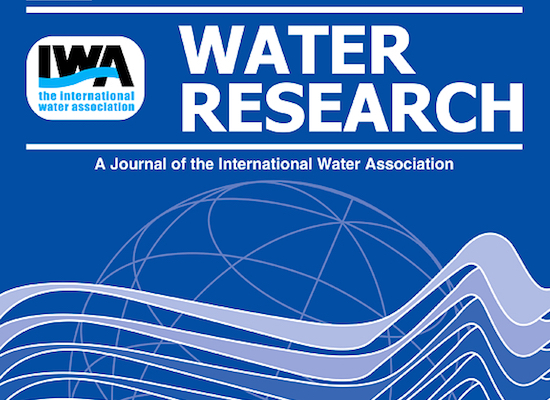
Ammonia recovery from anaerobic digester centrate using onsite pilot scale bipolar membrane electrodialysis coupled to membrane stripping
Ammonia recovery from centrate of an anaerobic digester was investigated using an onsite bipolar-electrodialysis (BP-ED) pilot scale plant coupled to two liquid/liquid membrane contactor (LLMC) modules. To investigate the process performance and robustness, the pilot plant was operated at varying current densities, load ratio (current to nitrogen loading), and in continuous and intermittent current (Donnan) mode.
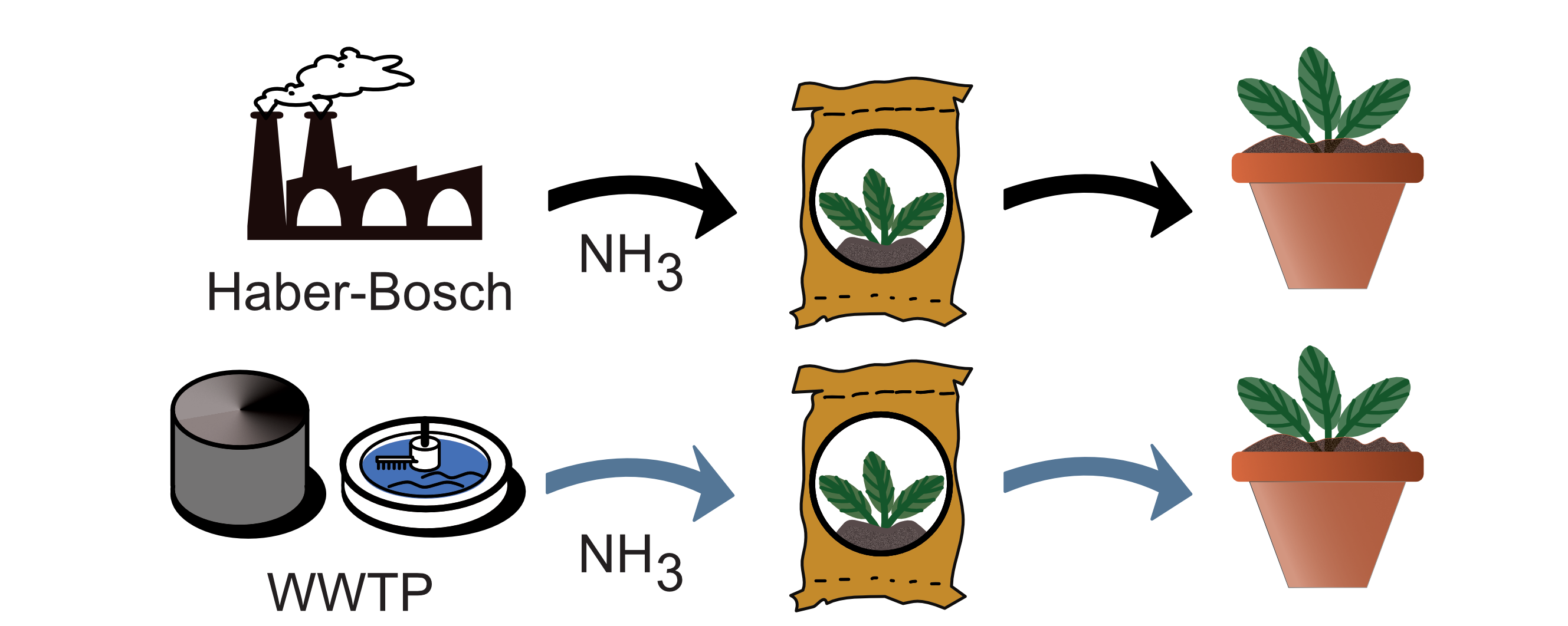
Application of ammonium fertilizers recovered by an Electrochemical System
Nitrogen (N) is an essential nutrient for plants and plays an important role in agriculture. However, the cycle between nitrogen input into agriculture and the nitrogen content in wastewater has been broken. Recently, nitrogen recovery from wastewater was demonstrated using an electrochemical system (ES) combined with a gas permeable membrane. This work demonstrates that fertilizers recovered by electrochemical systems can be used to improve crop growth and are a feasible alternative to commercial fertilizers.
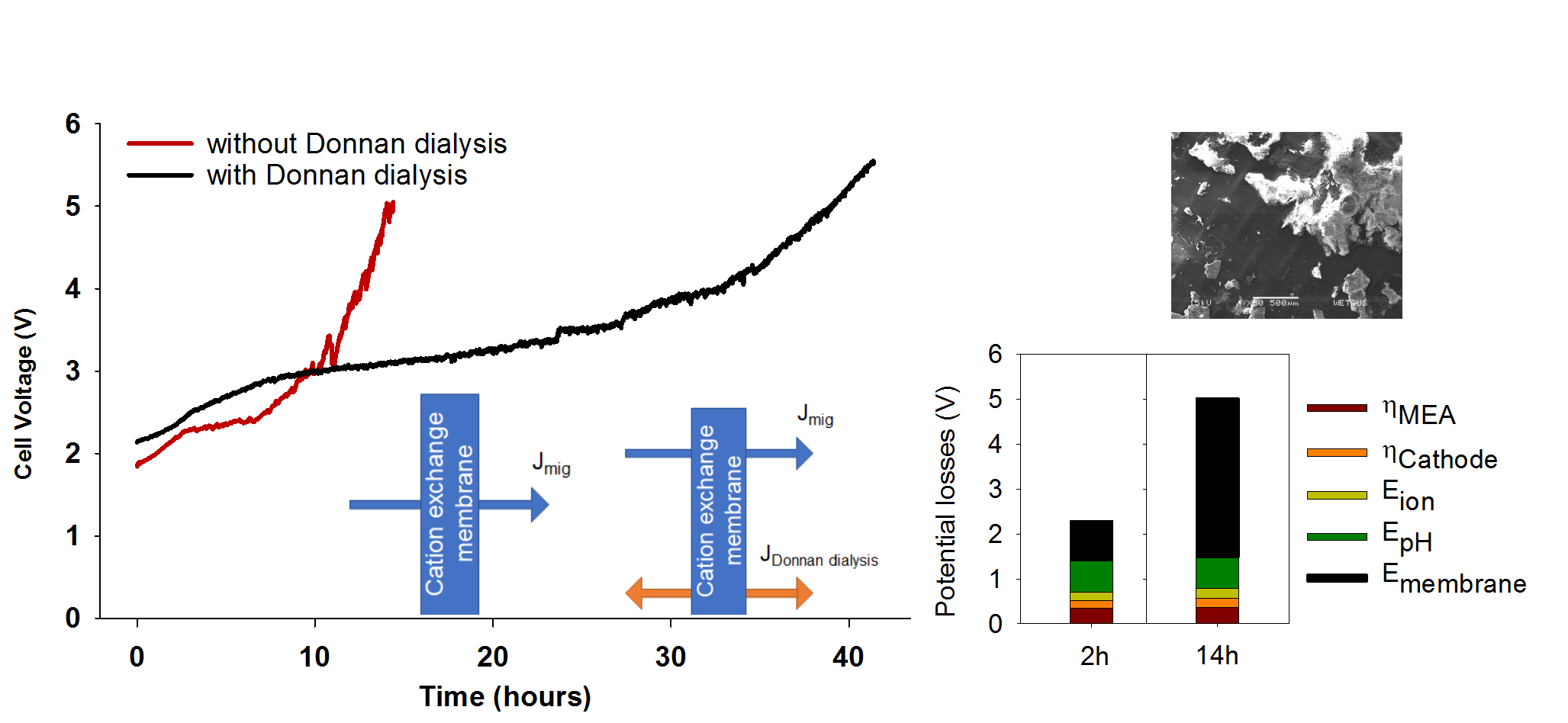
Donnan Dialysis for scaling mitigation during electrochemical ammonium recovery from complex wastewater
Inorganic scaling is often an obstacle for implementing electrodialysis systems in general and for nutrient recovery from wastewater specifically. In this work, Donnan dialysis was explored, to prevent scaling and to prolong operation of an electrochemical system for TAN (total ammonia nitrogen) recovery.
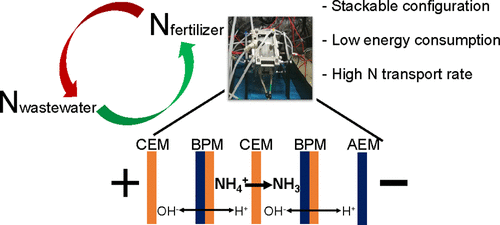
Minimal Bipolar Membrane Cell Configuration for Scaling Up Ammonium Recovery
Electrochemical systems for total ammonium nitrogen (TAN) recovery are a promising alternative compared with conventional nitrogen-removal technologies. To make them competitive, we propose a new minimal stackable configuration using cell pairs with only bipolar membranes and cation-exchange membranes. The tested bipolar electrodialysis (BP-ED) stack included six cell pairs of feed and concentrate compartments. The TAN transport rate, TAN removal, and energy input achieved by the minimal BP-ED stack demonstrated a promising new cell configuration for upscaling.
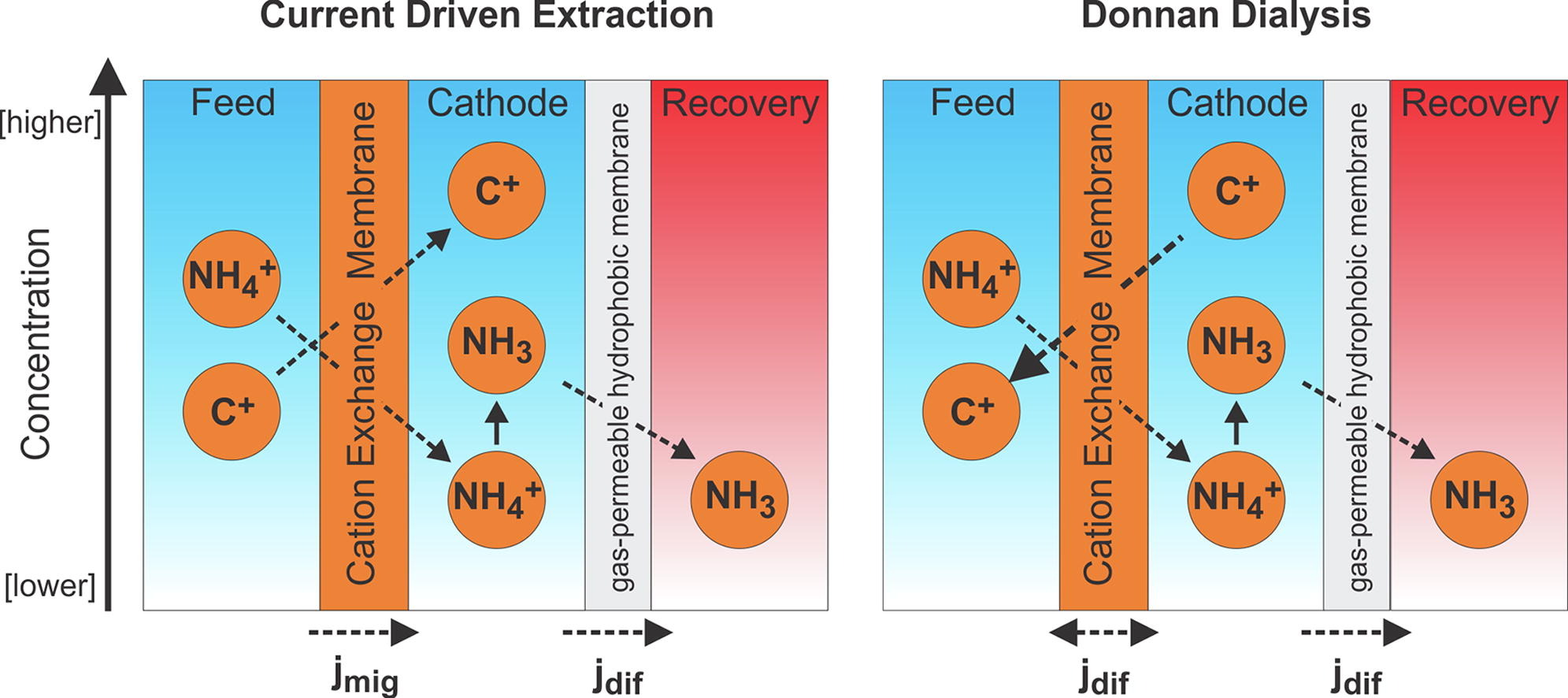
Exploiting Donnan Dialysis to Enhance Ammonia Recovery in an Electrochemical System
Donnan Dialysis was explored as a strategy to enhance the TAN removal efficiency in an a hydrogen recycling electrochemical system. Batch operation with Donnan Dialysis achieved similar removal to continuous operation but consumed less energy (between 7.8 kJ gN−1 and 10.1 kJ gN−1) than continuous operation. Donnan Dialysis can be a good strategy to enhance TAN recovery in batch operation mode since additional ammonium was removed at a lower energy input.
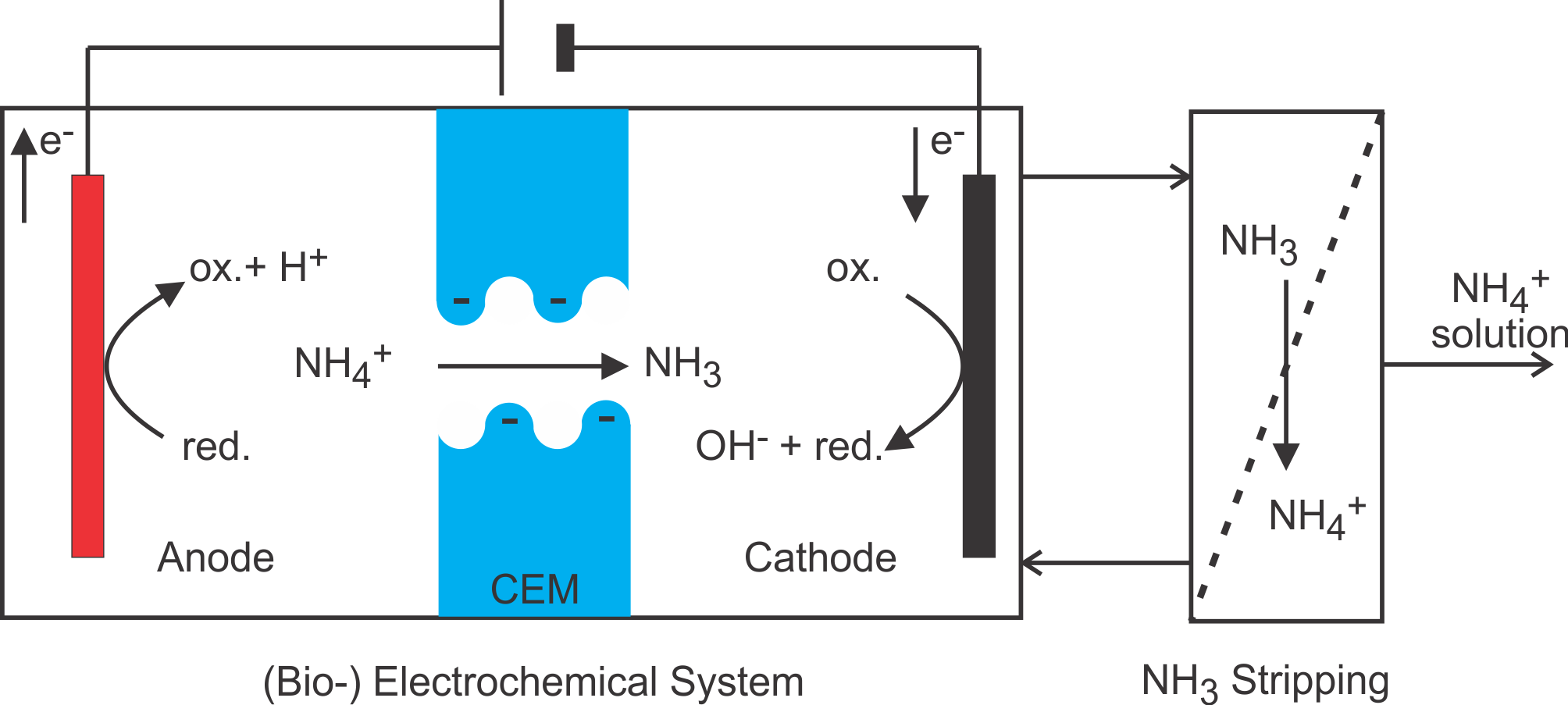
(Bio)electrochemical ammonia recovery: progress and perspectives
The state-of-the-art of (bio)electrochemical TAN recovery is described, the performance of (B)ES for TAN recovery is analyzed, the potential of different wastewaters for BES-based TAN recovery is evaluated, the microorganisms found on bioanodes that treat wastewater high in TAN are reported, and the toxic effect of the typical conditions in such systems (e.g., high pH, TAN, and salt concentrations) are described.
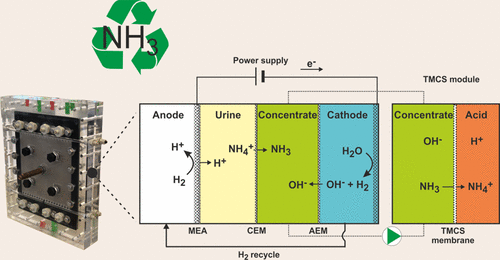
Energy-Efficient Ammonia Recovery in an Up-Scaled Hydrogen Gas Recycling Electrochemical System
Paper describing a hydrogen gas recycling electrochemical system (HRES) which combines a cation exchange membrane (CEM) and a gas-permeable hydrophobic membrane for ammonia recovery. This system allowed for energy-efficient ammonia recovery, since hydrogen gas produced at the cathode was oxidized at the anode. It was successfully up-scaled and optimized for ammonia recovery.
